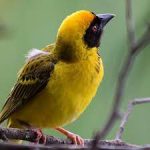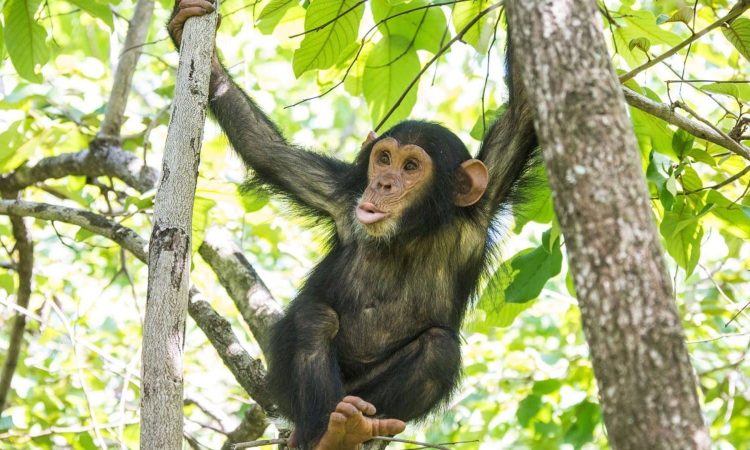Nestled just outside
Kibale National Park, in the heart of
western Uganda, lies Bigodi Wetland Sanctuary—a lush, community-managed swamp that has become one of the country’s most inspiring eco-tourism destinations. Famous for its rich biodiversity, captivating birdlife, and community-driven conservation model, Bigodi offers travelers a glimpse into the incredible harmony between people and nature.
Whether you are a passionate birder, a wildlife enthusiast, or simply someone seeking an authentic Ugandan experience, Bigodi Wetland Sanctuary promises something unforgettable.
A Brief History of Bigodi Wetland Sanctuary
Bigodi Wetland Sanctuary is a community-based conservation project established in the early 1990s under the Kibale Association for Rural and Environmental Development (KAFRED). The local community, recognizing the importance of preserving their environment, decided to protect the swamp as both a natural habitat and a source of sustainable income.The name “Bigodi” is derived from a local Rutooro word that means “walking in a swamp”—a perfect description of the experience visitors get when exploring this pristine ecosystem.
The Ecosystem and Biodiversity
1. Birdlife – A Birder’s Paradise

Bigodi is internationally recognized as one of the top birding destinations in Uganda. With over 200 bird species recorded, it attracts birdwatchers from across the globe. The Great Blue Turaco, with its striking blue plumage and red beak, is the sanctuary’s most iconic resident. Other notable species include:
•African Pitta
•Papyrus Gonolek
•White-spotted Flufftail
•Black-crowned Waxbill
•Yellow-rumped Tinkerbird
2. Primates and Other Wildlife

Bigodi Wetland Sanctuary is also home to eight
species of primates, making it an excellent extension to a chimpanzee trekking safari in Kibale National Park. Among them are:
•Black-and-white colobus monkeys
•Red-tailed monkeys
•Blue monkeys
•Grey-cheeked mangabeys
•Olive baboons
•Vervet monkeys
If you’re lucky, you might even spot
chimpanzees crossing through the swamp from the neighboring forest.
The sanctuary also harbors small mammals such as otters, bush pigs, and mongoose, plus countless amphibians and reptiles that thrive in the wetland ecosystem.
3. Unique Flora

The swamp is dominated by papyrus, palms, and wild figs, providing both beauty and vital ecological services. These plants act as natural water filters, flood regulators, and habitats for countless species.
The Bigodi Wetland Walk Experience

A visit to Bigodi is best enjoyed through the 2–3 hour guided wetland walk, led by trained community guides. The trail includes boardwalks over the swamp, small bridges, and forested paths. Along the way, guides share local knowledge about the flora, fauna, and traditional uses of plants.
The walk is leisurely and educational, making it suitable for all ages. It’s not just about spotting animals—it’s about understanding the deep connection between the local community and their natural environment.
Community and Cultural Experiences

One of the most remarkable aspects of Bigodi Wetland Sanctuary is how much it benefits the local community. All revenues from tourism are reinvested into education, health, and infrastructure projects in the Bigodi village.
Visitors can also extend their experience beyond the wetland walk by engaging in:
•Village Tours: Interact with local families, visit homesteads, and learn about traditional cooking, weaving, and farming practices.
•Craft Shops: Purchase handmade crafts such as baskets woven from papyrus and palm leaves, providing direct income to local artisans.
•Coffee Tours: Experience the journey of Ugandan coffee, from bean to cup, guided by smallholder farmers.
This combination of eco-tourism and cultural immersion makes Bigodi a model for sustainable travel.
Why Visit Bigodi Wetland Sanctuary?

1.Authentic Eco-Tourism: 100% community-run, ensuring your visit directly supports conservation and local livelihoods.
2.Birding Hotspot: A must-visit for birdwatchers, with species found nowhere else.
3.Primate Encounters: See monkeys and possibly chimpanzees in their natural habitat.
4.Cultural Insight: Learn firsthand about Ugandan rural life and traditions.
5.Accessibility: Located just 6 km from Kibale National Park’s Kanyanchu Visitor Center, it’s easy to combine with chimp trekking.
Practical Information for Visitors

•Location: Bigodi village, about 40 km southeast of Fort Portal town, and near the edge of Kibale National Park.
•Best Time to Visit: Year-round, though the dry seasons (December–February, June–August) make for easier walks.
•Entry Fee: Typically around $30 per person (foreign visitors), with lower rates for East Africans and Ugandan citizens.
•Guided Tours: Walks usually last 2–3 hours, starting in the morning or afternoon.
•What to Bring: Comfortable walking shoes, insect repellent, binoculars, water, and a camera.
Final Thoughts
Bigodi Wetland Sanctuary is more than just a swamp—it’s a story of how communities can safeguard biodiversity while creating sustainable livelihoods. For travelers seeking to go beyond traditional safari experiences, Bigodi offers a chance to walk slowly, observe deeply, and connect meaningfully with Uganda’s people and wildlife.
If you’re planning a trip to Kibale National Park, don’t just come for the chimpanzees—make time for Bigodi. You’ll leave with memories of vibrant bird calls, playful monkeys, and a community that proves conservation and development can thrive together













